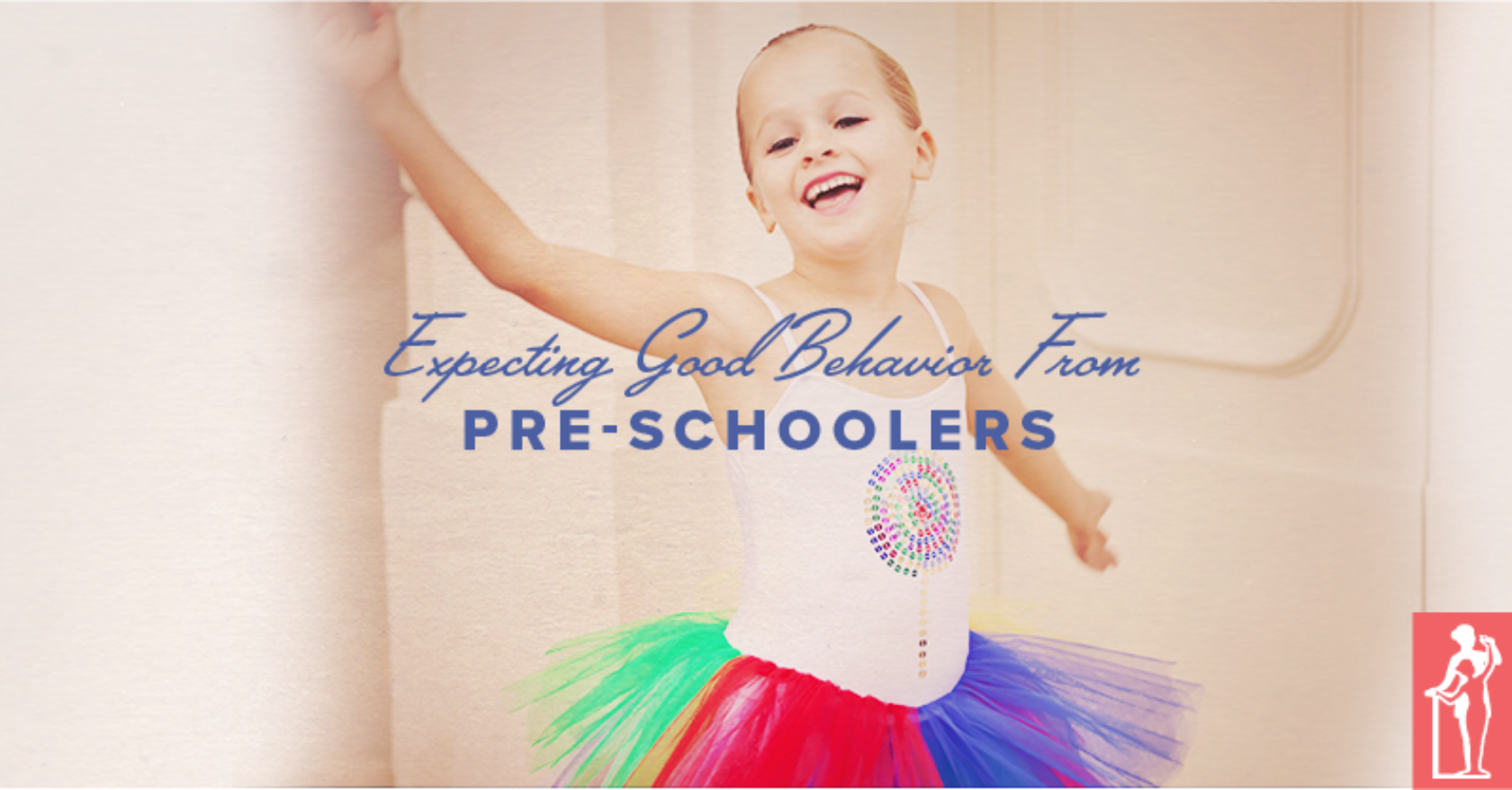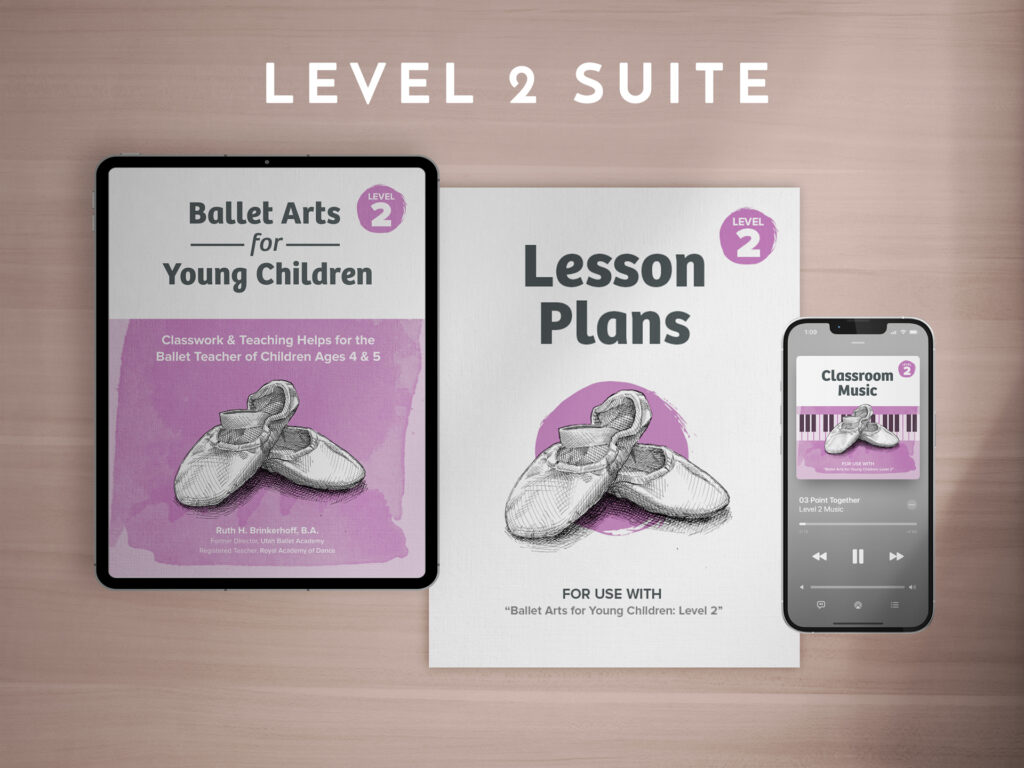Three, four and five year olds are the most complex, delicate and fascinating students to teach! Not everyone walks into their ballet classroom and feels fully prepared for what is to come. These great points from the Level 2 Curriculum Book will provide useful and practical advice to the ballet teacher who finds this level particularly challenging.
I. Children Are Not Small Adults!
A. Remember, children are not born with:
- Self Control
- Patience
- Courtesy
- Knowledge of appropriate language
- Knowledge of appropriate behavior
- Awareness of possible harm to others
They have to be taught all of these things. They must be taught with patience until they show by their behavior that they have learned.
B. Teachers need to:
- Be gentle, firm and committed to correcting the learnings of the children.
- State your rules and your expectations, then expect compliance. They will sense your inner attitude.
- Use courtesy: “please”, “thank you”, “we don’t do that in dance class”, “not in my class, please.”
- Distract the child from the wrong behavior whenever possible. Avoid giving the reward of attention for the wrong things.
- Never threaten. Avoid responding to “smarting off.” Never argue with a child: you will lose!
C. Young dancers cry easily. They may cry from fear, from hurt feelings, from frustration or as an attention-getter.
- Give minimal comfort, a matter-of-fact acknowledgment of feelings, and the idea of “let’s dance again.”
- They must understand: It’s alright to cry, but not alright to disturb the class. So, if a child continues, you need to have her taken out and calmed down by her mother or an assistant.
Student assistants: One younger than sixteen must have limited, well supervised responsibility only. One under eighteen must work under a responsible adult, and not teach on their own. There are legal implications. Check local regulations. (See “Training Your Dance Assistant”)
D. Rules are for the children’s benefit. They are based on courtesy and safety.
- We don’t hurt ourselves, our classmates, our teacher, the equipment or the building.
- We don’t disrupt the class by doing things that are not fun for our teacher or classmates.
II. Have a Plan for Keeping it Fun
A. Ideas to try; they may or may not work in your class.
- “If you are ‘old enough to dance’, you are old enough to sit on your spot for me. Thank you! I knew you could do it.”
- “Dancer’s don’t talk; the teacher talks in dance class. It’s not your turn, it’s my turn.”
- Keep the class moving with no long pauses. They sit at the end of each exercise, with legs folded, and hands on knees. “Sit like a dancer!”
- Keep your sense of humor, but never laugh at the kids, or at their efforts to learn. And don’t let anyone who might happen to be watching laugh at them either.
- Teach them not to laugh at each other. When the children laugh inappropriately: “Was that funny? Does it feel good to laugh? But if someone laughs at you, that’s not fun, is it? So let’s not laugh at each other.”
- When a child hits another child, you must immediately take action to prevent any more hitting. As you lead the offender to another part of the room, you might say, “It isn’t fun to be hit, is it? So we don’t hit our classmates.”
- “Well, it’s not fun for me when you do that. And it’s my class! I like to teach ballet because it is fun. Don’t spoil my fun.”
- “Class is much more fun when everyone does what they are supposed to do!”
B. Reflect their feelings:
Put yourself in the child’s place. Try to see his or her point of view at their level of understanding.
Examples:
- “That’s hard to do when your muscles are tired. I’m sorry you are tired. Let’s all sit in our places for a minute and rest.”
- “It’s hard to dance if you are hungry.”
- “It isn’t fun to fall down.”
- “It’s hard to wait your turn. But you can do it!”
- “Dancers don’t bump. If they bump accidentally, they must say they are sorry.”
C. Distract them, or change the activity.
- “Who can show me how to hop on one foot?” “Who can show me first position?”
- “Make a circle. Get on your ponies, ready to gallop. What color is your pony today?”
III. The Teacher is in Charge!
A. Stick to your standards:
- Class must not be disrupted. That is unfair to those others who paid for the lesson. “Your parents pay me to teach you to dance, not to goof off, OK?”
- Children must not be hurt.
- Equipment must not be played with or damaged.
B. Make the choices. Decide what happens.
- The children want you to be in control of the class. They don’t feel safe unless you are.
- Parents appreciate a teacher who knows how to be in charge. Only then can learning take place.
- Parents want a teacher who will be nice to their kids, and keep them safe. This includes safe from each other!
V. Growth and Learning are Constant
Children are in a constant state of change. They learn what they experience, whether we want them to or not. You are dealing with a complete person, not just their dancing muscles! They bring both previous learnings and their lack of learnings to dance class.
Preparation is key to a successful classroom experience, both for you and for your students. This doesn’t just mean having a lesson plan scribbled down before coming into class. Make sure you really know who your students are, what their needs are, and what specific learning styles they respond best to.
Related Articles


Comments
No comments for this post.
Add Comment